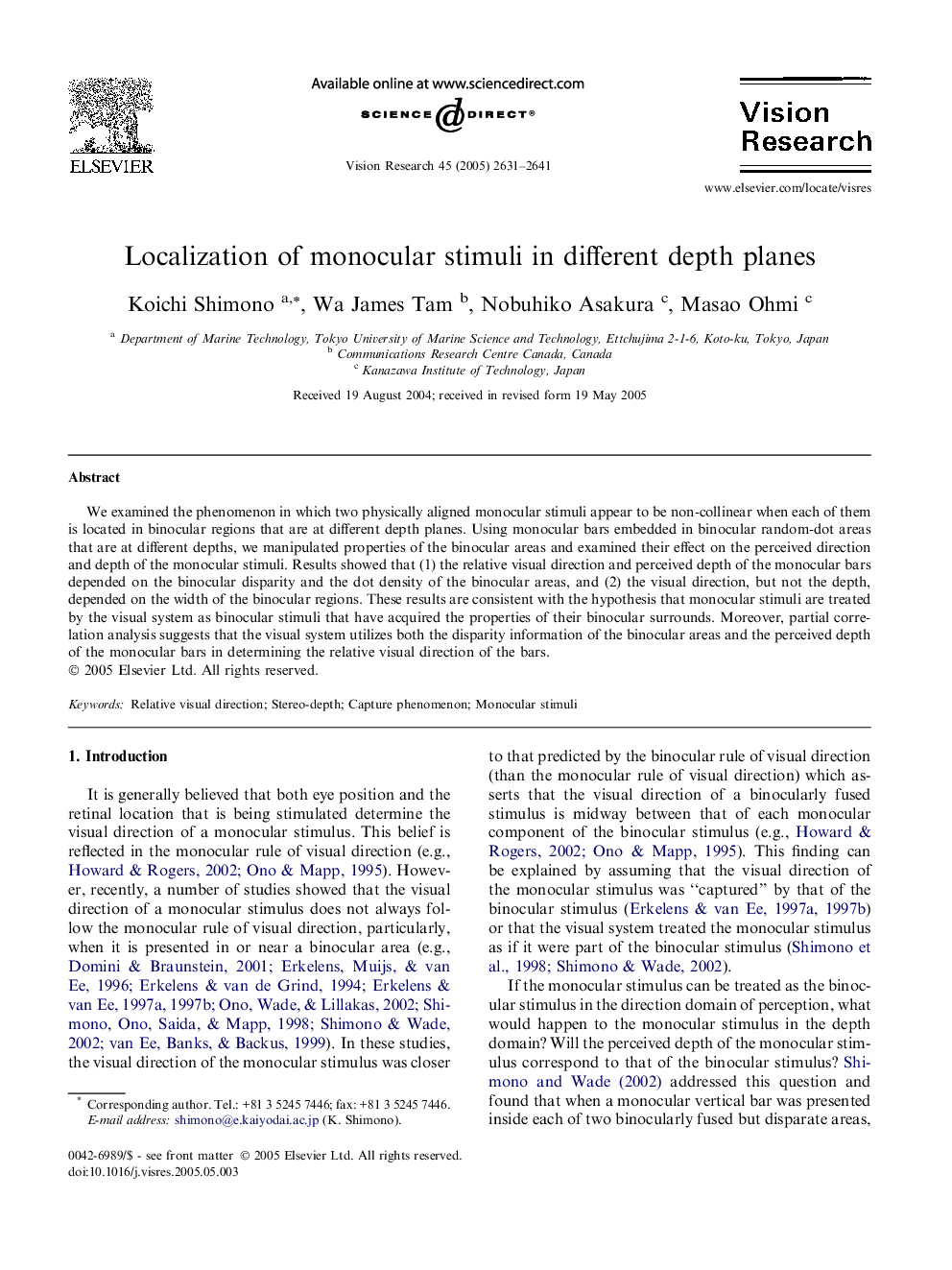| Article ID | Journal | Published Year | Pages | File Type |
|---|---|---|---|---|
| 4036061 | Vision Research | 2005 | 11 Pages |
We examined the phenomenon in which two physically aligned monocular stimuli appear to be non-collinear when each of them is located in binocular regions that are at different depth planes. Using monocular bars embedded in binocular random-dot areas that are at different depths, we manipulated properties of the binocular areas and examined their effect on the perceived direction and depth of the monocular stimuli. Results showed that (1) the relative visual direction and perceived depth of the monocular bars depended on the binocular disparity and the dot density of the binocular areas, and (2) the visual direction, but not the depth, depended on the width of the binocular regions. These results are consistent with the hypothesis that monocular stimuli are treated by the visual system as binocular stimuli that have acquired the properties of their binocular surrounds. Moreover, partial correlation analysis suggests that the visual system utilizes both the disparity information of the binocular areas and the perceived depth of the monocular bars in determining the relative visual direction of the bars.
